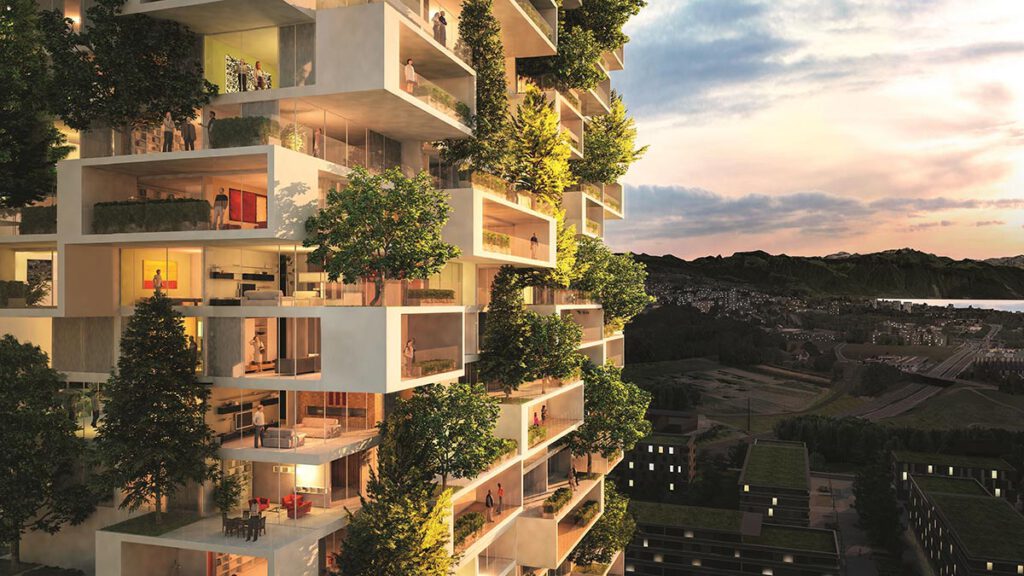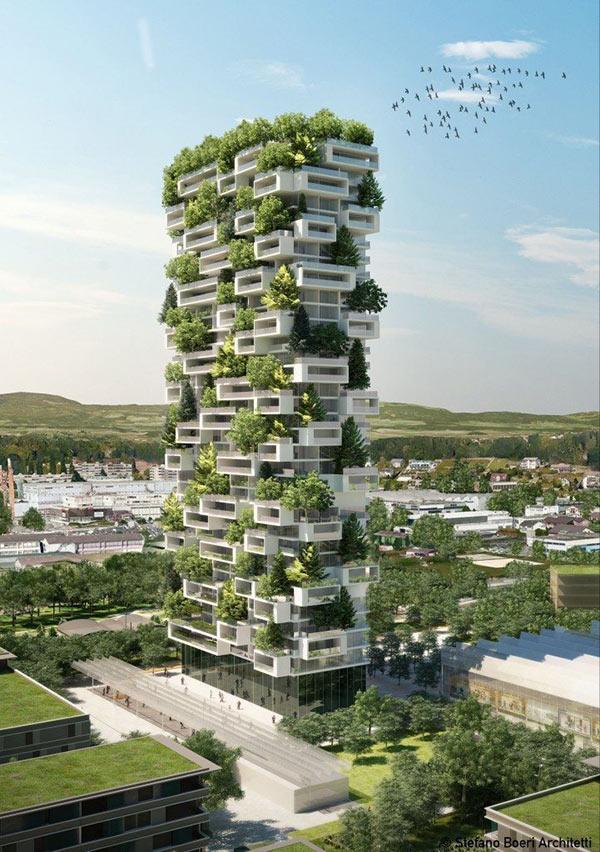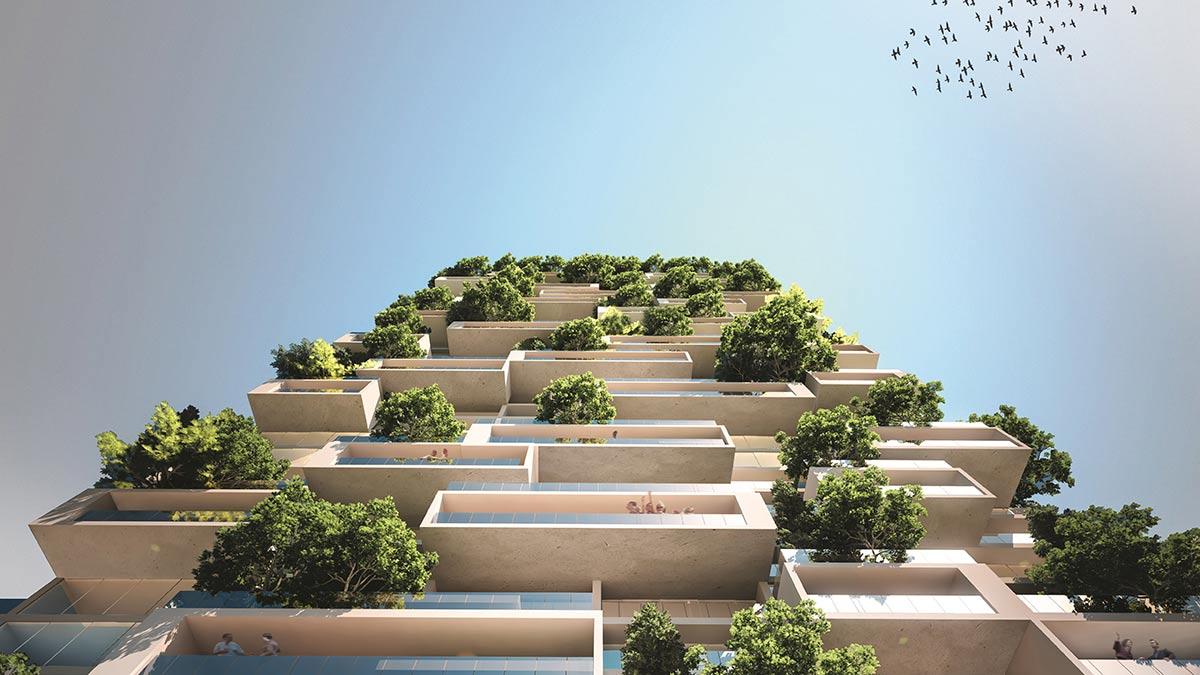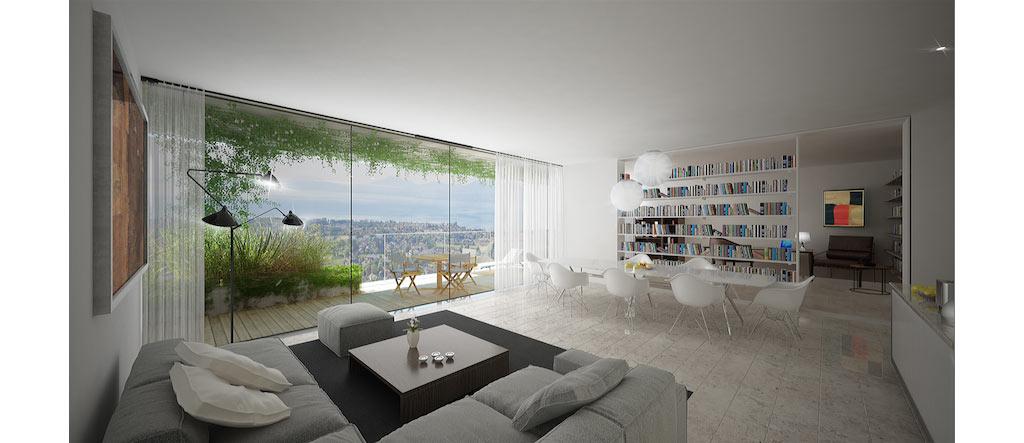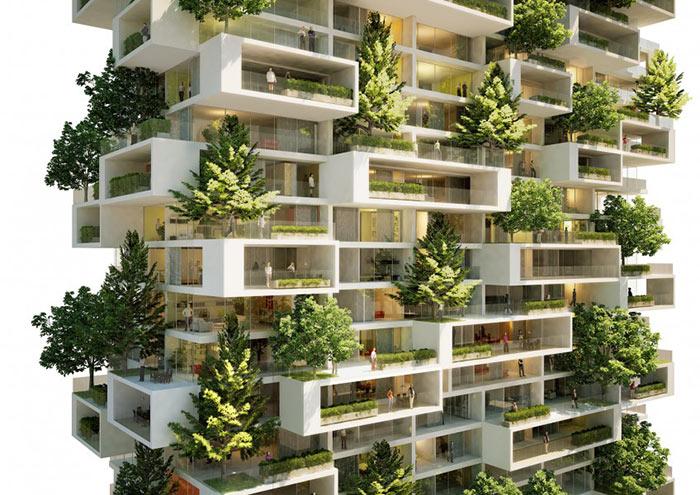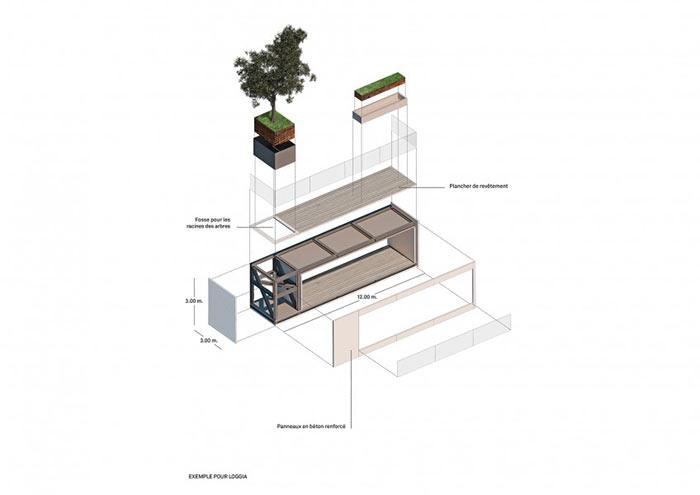Cedar trees off the ground
Stefano Boeri is regarded as a pioneer of biodiverse architecture. The Torre dei Cedri planned for the outskirts of Lausanne will be another of his spectacular towers. This time, the vertical forest will consist of over 80 trees.
The highly populated urban areas of our planet use 75 percent of its natural resources. They also produce 70 percent of global CO₂ emissions. While every year, the trees and forests of this planet absorb nearly 40 percent of all emissions from fossil fuels. In other words, a greater quantity of trees and plants in cities helps to clean the air, reduce CO₂ emissions and increase biodiversity. That is the premise on which Stefano Boeri has based his Urban Forestry manifesto.
The vertical forest
Milan architect Boeri has committed himself to making cities greener and is regarded as a pioneer of biodiverse architecture. His vision goes beyond mere facade greening and creates a new kind of interconnection between nature and the built environment. He shot to international fame with his “vertical forests”, which are high-rise buildings covered in greenery. The prototype was Bosco Verticale in Milan, a high-rise complex with two towers that are home to 900 trees and around 2,000 different plants.
The main protagonists in this tower are – besides or even ahead of the people – the cedar trees.
Stefano Boeri, architect
Another example of Boeri’s vertical forests is currently being developed in Chavannes-Près-Renens, near Lausanne in Switzerland. The project is titled La Torre dei Cedri (The Cedar Tower) and is being created in collaboration with the architect Marco Bernardini. According to architectural firm Stefano Boeri Architetti: “The main protagonists in this tower are – besides or even ahead of the people – the cedar trees.”
Cedars defy climate change
This type of tree is highly resilient to changes in the climate as it tolerates hot, dry conditions very well. Global warming is increasingly causing urban planners in Central Europe to choose exotic trees for greening. This is because many native species are unable to survive the heat of the summer in the city without watering.
Over 80 trees from three different types of cedar will be planted on the facade. Together with the bushes and other plants, they will cover a total green area of around 3,000 square metres. The deep concrete planters used in Milan will be adopted here as well. Each one has grating at the bottom as additional support for the roots, enabling the trees to withstand stormy weather.
Plants improve the microclimate
Oversized containers for the trees are part of an exterior design that is based on the principle of a disconnected facade. The architects describe the design as follows: “The overall volume of the tower is characterized by a series of protruding elements including loggias of variable length in a staggered arrangement. In addition to integrating gigantic ‘pots’, this enlivens the facades and breaks up the rigid vertical succession of floors.”
The overall volume of the tower is characterized by a series of protruding elements including loggias of variable length in a staggered arrangement.
Stefano Boeri, architect
The greenery on the facade of the 117-metre-high Torre dei Cedri has many other benefits besides absorbing CO₂. Firstly, it provides new habitats and food sources for insects and birds. And secondly, the plants enhance the microclimate in the apartments and on the terraces. “This improves the quality of life for residents and forges a link with nature in an urban setting,” the architects explain.
195 apartments for 400 people
With a total of 36 storeys, the Cedar Tower is designed to provide living space for 400 people in 195 apartments with a greened facade. Architects and developers are planning a good combination of uses. Besides whole office floors, a fitness centre and restaurant will also be available in this green high-rise.
Although there are no long-term studies on this kind of structure at present, analyses of the Milan towers are expected to confirm the positive effects. The air quality in the apartments is much better than in their surroundings, for example. And after a long absence from the Italian city, certain types of bird have been making their nests in the green facade.
Text: Gertraud Gerst
Translation: Rosemary Bridger-Lippe
Visualizations: Stefano Boeri Architects
